
Add water to the rice and drain quickly. Add water again and wash the rice gently so as not to break the grains, then drain. Repeat the second procedure at least 4 times.
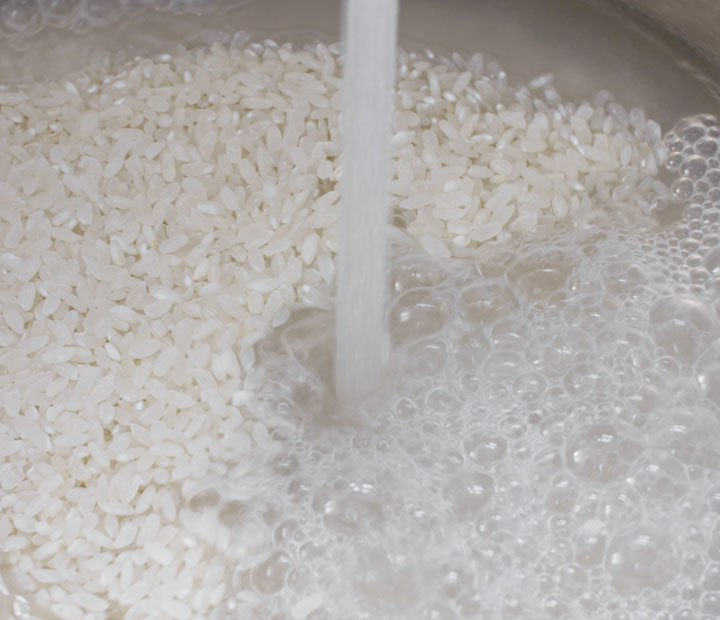
Let the rice soak in the water for at least 30 minutes.
This ensures that the moisture penetrates each grain, so that the rice cooks evenly and thoroughly in a relatively short time without becoming too soft.
Suggested times for soaking are one hour in summer, two hours in winter, based on changes in humidity.
When soaking is complete, the weight of the rice increases by 1.25-1.30 times that of the dry rice.
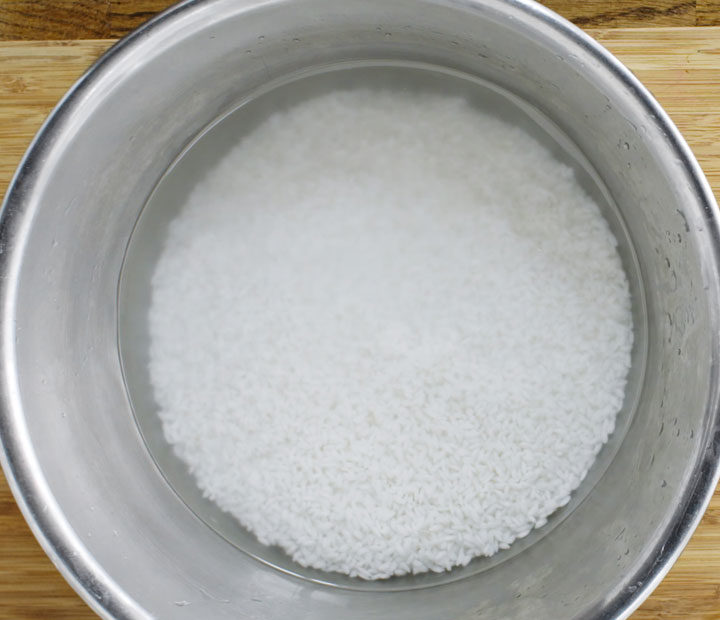
Drain the water after soaking and add fresh water before cooking.
How to calculate amount of water to add to rice:
The suggested total amount of water to be used in the process is 1.35 x the weight of the dry rice.
Total amount of water used = amount of water absorbed during soaking + amount of water added to cook rice
If you use 1kg of dry rice:
Total amount of water used in the process: 1kg x 1.35 = 1.35kg
Measure the amount of water absorbed by the rice during soaking by weighing the rice before and after soaking (or approximating 0.25kg).
Subtract the amount of water absorbed from the 1.35kg to know how much to add to the rice: 1.35kg – 0.25kg = 1.1kg
Therefore, add 1.1kg of water to the soaked rice.
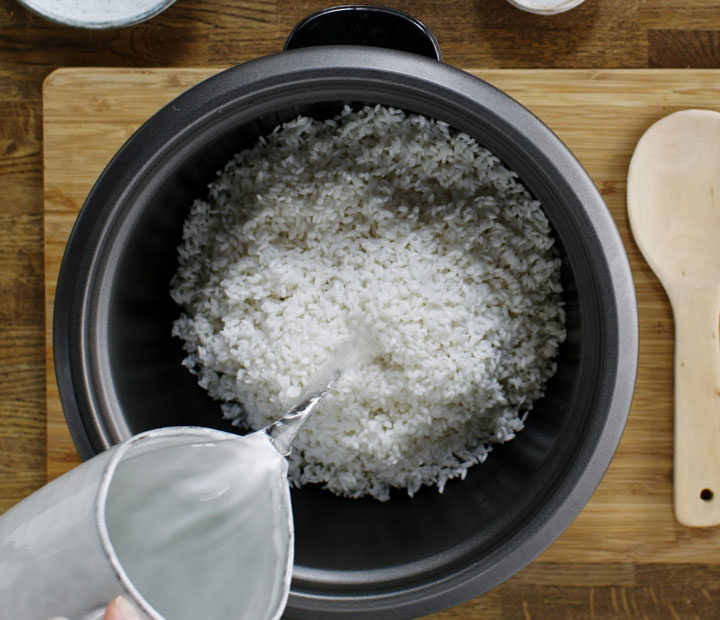
Cook the rice as per the instructions on the automatic rice cooker.
Once finished, leave the rice in the cooker for at least 30 minutes to steam.
Some Japanese rice cookers already include time for steaming in their cooking time, so please check as it may not be necessary to have the additional 30 minutes.
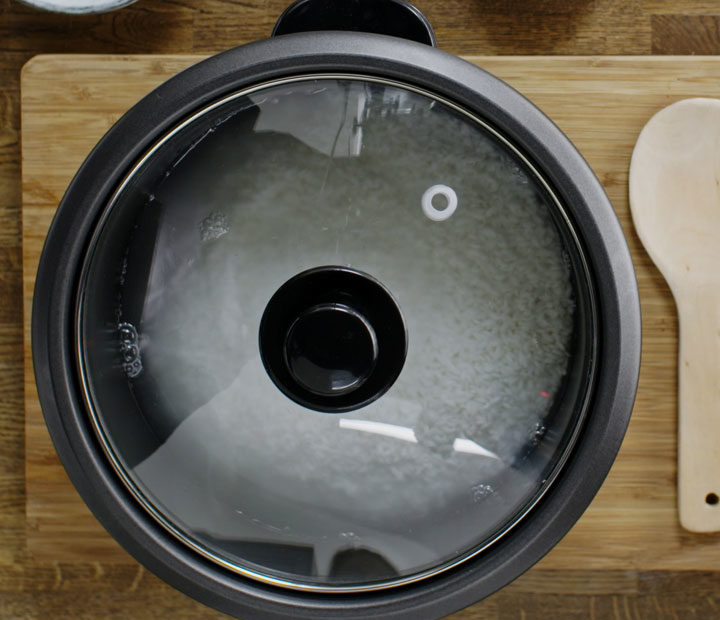
Add the ingredients to a saucepan, place over a low- medium heat and melt the sugar and salt whilst stirring continuously.
Heating the mixture helps the sugar to mix in more quickly and adds a deeper flavour from the heated sugar.
When mixed, remove from the heat and turn on your rice cooker.
Experiment to find your favourite golden ratio! The Japanese tend to prefer a sweeter flavour, hence will use a ratio of 5-4-1. Europeans may prefer one with less sugar, to parts of 10-4-1
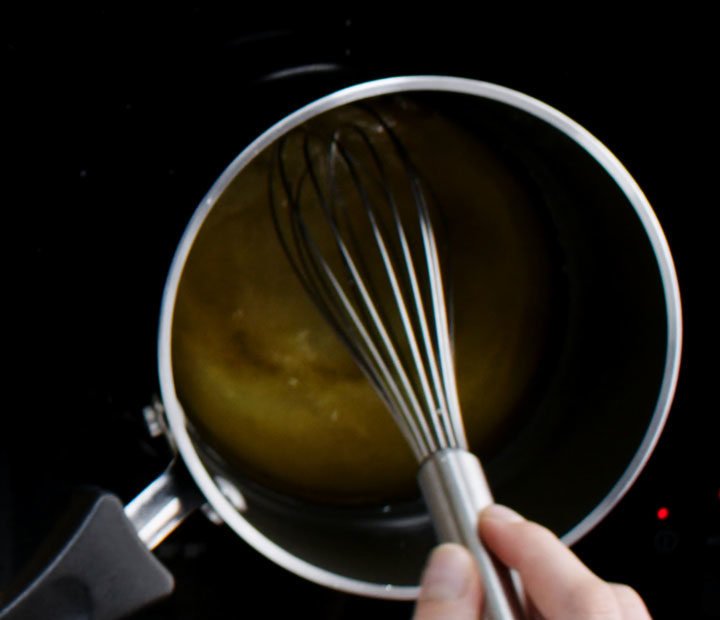
Wet a hangiri (a Japanese wooden shallow tub), or a large bowl, and pour the cooked rice in it.
Fluff up the rice with a dampened rice paddle and add the sushi seasoning in, folding the vinegar gently in to coat the rice evenly.
Quickly break up any chunks with the paddle to prevent clumps from forming. Use a gentle cutting motion, rather than mixing the rice into a paste.
Finally, put a wet cloth on the rice and let it cool until the rice reaches body temperature.
For the best rice, cool the rice more quickly with a fan as you mix and fold the rice until the rice is body temperature. The quicker cooling increases the shininess of the grain.
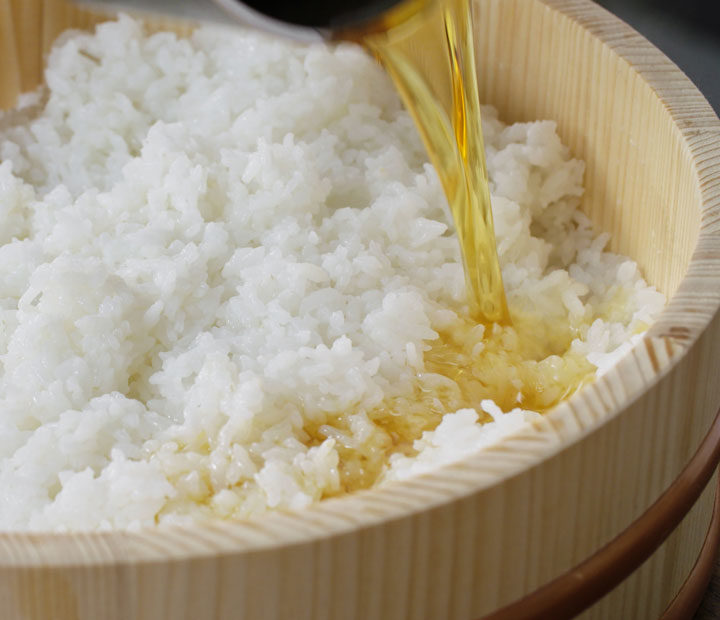

Earthy and creamy with a soft nutty taste, this sesame dressing will enhance the natural flavours of any salad.
10 mins
A rich and fragrant risotto with saffron and Honteri, perfect served with grilled prawns, scallops, or lobster and plenty of lemon and lime.
40 mins